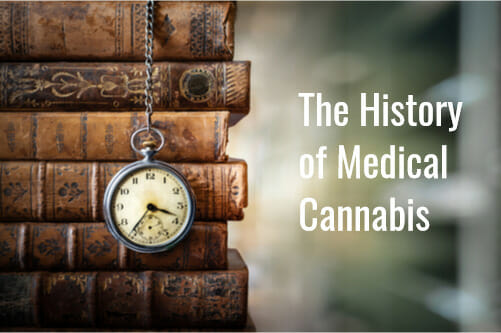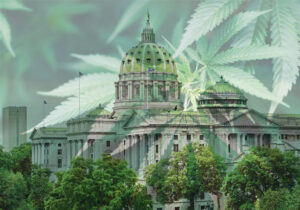The history of marijuana stretches far back into the prehistoric past, long before the first human ever walked the earth. Documentation has been around for at least 5,000 years.
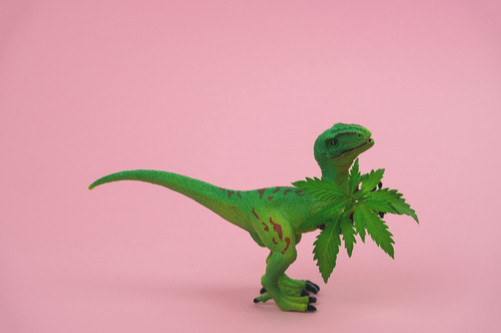
Dating back to 3000B.C., we have documentation from Egypt, India and China with different graves where the cannabis plant was actually there!
We also know cannabis use has significantly influenced and shaped the human experience.
Hemp, a type of cannabis low in psychoactive cannabinoids, is one of the oldest human-cultivated crops. To this day, people continue to grow, process, and use hemp for industrial purposes, but the history of medical marijuana is far more turbulent.
So without further ado, let’s explore the storied past of medicinal cannabis and its worldwide usage.
The Birth of Cannabis
The first cannabis plants likely developed about 28 million years ago (Late Paleogene Period).
You can trace its origins back to the mountainous regions of Tibet, which were still forming into the Himalayas during the Late Paleogene.
The first hemp plants were hardy. They had to be to survive the harsh conditions of the developing Himalayan Region.
Over time, this plant spread throughout the area that would become China. It proliferated despite the variation in soil quality and type. This weed-like hardiness would later give the plant its infamous nickname.
Approximately 22 million years after cannabis’ arrival, human beings began to traverse the planet. It wouldn’t be long before they stumbled upon cannabis.
Industrial Beginnings
The earliest humans were hunter-gatherers, eating what they could when they could. But about 12,000 years ago, something changed.
Either via observation or trial-and-error (or a combination of the two), humans discovered that they could germinate seeds and plant them. This consistent food source changed everything.

This allowed primitive peoples to settle into established communities. It also led to the birth of agriculture and the first domesticated crops and animals. Hemp was one of the first plants cultivated by these early humans.
Hemp crops date back to 8000 BC (about 10,000 years ago). They were planted in China, and people used them for industrial purposes. Some of the first clothes were woven from hemp fibers.
People ate the seeds of these plants. They ate them raw or mashed them into a fine powder to create bread. Hemp seeds are rich in a variety of life-sustaining macro and micronutrients.
This high nutritional content may have increased their popularity among early settled tribes. And it wouldn’t be long until these burgeoning civilizations discovered cannabis’ medicinal properties.
Ancient Medical Usage
One of the oldest recorded uses of cannabis as a medicinal plant comes from with writings of Hua Tuo, a Chinese physician who lived almost 2,000 years ago. He used cannabis as an anesthetic, dulling the pain of surgery.
The success of this method likely contributed to the spread of cannabis throughout the ancient Chinese kingdoms.
As a result, hemp cultivation continued and increased, and word of its many uses spread far beyond the confines of Asia. Soon, trading began to develop among European, African, and Asian civilizations.
In short, hemp quickly became a prime commodity in this ancient world.
Fast-Spreading Plants and Trade Routes
By the time Chinese physicians started utilizing cannabis for medicinal purposes, the first branches of the Silk Road had already begun to form. This network of trade routes would be an essential resource.
Traders used the Silk Road to spread silk, tea, and cotton throughout Europe and the Middle East. But these well-worn pathways also became a conduit for the spread of cannabis.
Soon enough, merchants and landowners throughout the ancient world had access to hemp.
Holistic Healing and Recreational Use
Up until the 1800s, marijuana was a popular and accessible medicinal plant. Often found growing in physic gardens, it proliferated and was used to treat various ailments, from nausea to anxiety.
Information about cannabis’ recreational use is limited. But it’s safe to say that ordinary people also enjoyed consuming and smoking the flowering buds of these cannabis plants.
Additionally, hemp had now spread to almost every corner of the globe, from Central America to its starting point in Central Asia.
But both recreational and medicinal marijuana use would soon become demonized throughout much of the world.
The reason for this criminalization might be Imperialism. But the Industrial Revolution might have also played a part.
The 19th century and Industrialism
The beginning of the 19th century heralded many changes, from the birth of the US White House to Napoleon’s Battle of Waterloo. But political shifts soon coincided with technological developments.

In 1760, agricultural machines began to change the way that people sowed and harvested crops. Inventions like the cotton gin made it far easier to process large amounts of goods in a shorter time.
Such devices allowed for greater yields and higher profits. Landowners and merchants invested in these new machines. They expected an immediate increase in wealth.
They also expected an increase in labor and working hours. As you might expect, this didn’t bode well for the laboring class.
Medical marijuana in western civilization
Now to start the journey into the western culture…. In 1839, a surgeon from England by the name of William Shaughnessy, went to India to study. He found that cannabis was helping people with so many different problems and he was impressed with his experience. So, he brought it back to the west with him.
For the next 100 years cannabis was used in medicine. This included the American medical community. The AMA and various pharmaceutical companies, including Bayer, used high proponents of that.
In fact the founder of modern medicine, William Osler, recommended using cannabis as the best medicine he had for migraine headaches. Very impressive.
Unfortunately back in the 30’s and 40’s there was a social change here in America. In 1940, cannabis was taken off the pharmacopoeia, which is a listing of the different medications.
Reefer Madness: Criminalization and Anti-Cannabis Propaganda
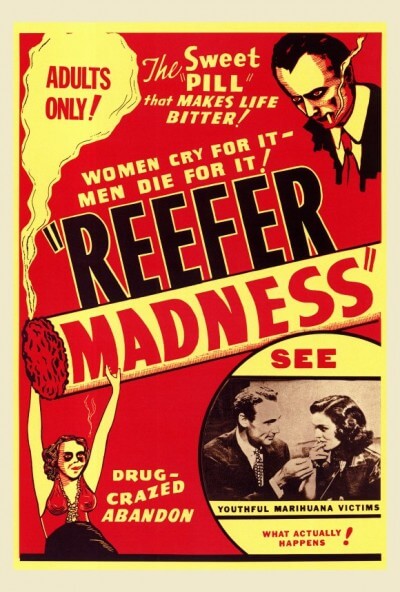
Perhaps you recall the movie Reefer Madness? This movie and type of propaganda actually catapulted cannabis into a very strange position and it was made a Schedule 1 drug shortly after.
In 1952, cannabis was made a narcotic. In 1970, THC, the more psychoactive component of marijuana was made a Schedule one, which is similar to LSD and heroin . It really had no particular value.
On December 16 2016, CBD, another component of cannabis, was also made a Schedule one drug. This has made it challenging for research and application.
Now that stated, there is currently 33 states that have medical cannabis and 10 states that have recreational. There is a lot more research being forwarded and Pennsylvania is leading the nation.
The First Anti-Marijuana Laws
One of the most common side effects of smoking or consuming marijuana is a sense of relaxation and mental calm. While this effect can be beneficial, many people in positions of power saw it as a threat.
After all, if your laborers use cannabis, they might work at a slower pace. This change could cause your profits to either stagnate or decrease.
Consequently, military leaders and landowners imposed harsh penalties for anyone caught using cannabis. Napoleon Bonaparte was one of the first to ban marijuana (hashish).
But he was far from the last.
The British Empire also imposed bans on cannabis. But they initially only targeted colonies, not native citizens. Cannabis restrictions were seen as a valuable device for boosting non-native labor.
Yet as machinery advanced, so did the need for cheap labor. As a result, the target of anti-marijuana laws shifted from colonists to laboring class citizens.
Anti-Cannabis Propaganda Spreads
The US has a long and complicated relationship with immigrants. For example, thousands of Mexican immigrants flooded into Texas and California during the 1900s. They were both welcomed and stigmatized.
Part of this stigmatization stems from the fact that many immigrants brought cannabis with them. When they arrived, they shared their recreational marijuana usage with their new neighbors.
On the surface, there was nothing harmful about this development. But prejudice and racism can twist any fact and make it seem intimidating or dangerous.
Many people living in the Southwest weren’t friendly toward their new immigrant neighbors. When the Great Depression started, this distrust turned into fury.
Targeting the increase in marijuana usage became a new type of rhetoric that spread quickly throughout the US. By the early 1930s, more than half the US had banned cannabis use, medicinal or otherwise.
Like the 1936 film Reefer Madness, propaganda films only exacerbated the public’s fear of the unassuming hemp plant.
An Unexpected Resurgence
From the 1920s until the late 1950s, the general public considered marijuana a menace. But it wasn’t seen as a widespread issue. Many people thought that cannabis users were all vagrants and criminals.
But the truth is that marijuana never disappeared. Instead, it became taboo. People continued to use it for recreational and medical purposes, but they did so in secret.
This would all change during the 1960s. This decade saw massive cultural revolutions that changed the public’s perception of marijuana.
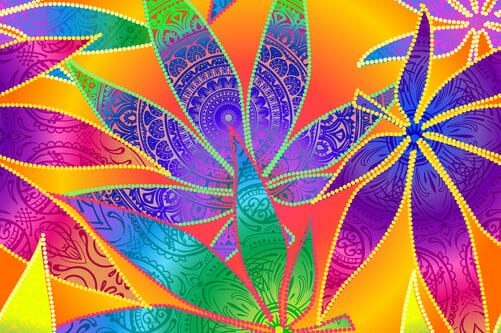
For one of the first times in US history, people began openly discussing the benefits of cannabis. In response, many states implemented harsher regulations. Anti-marijuana propaganda was prevalent but ineffective.
This decade led to an immediate backlash against cannabis usage. But it was the first significant step toward widespread decriminalization.
Decriminalization of Medical Marijuana
In 1970, the US saw the introduction of the Controlled Substances Act (CSA), a statute that kicked off Richard Nixon’s infamous War on Drugs.
Only three years later, Oregon began implementing decriminalization laws to counteract the CSA. Still, it would take another 23 years for other states to follow suit.
State Laws and Societal Changes
In 1996, the citizens of California voted on Proposition 215. It was a law that would allow residents to use medical marijuana. Of course, only while within state boundaries (and with physician approval).
It passed with a 55% majority vote.
This policy change would soon inspire a national conversation about the further decriminalization of cannabis and its medicinal applications. Since then, all but 13 US states have approved the use of medical marijuana.
However, many of these anti-marijuana states have legalized CBD oil use. This may seem counterintuitive, especially when you consider that CBD is a compound derived from hemp plants.
4 major components of marijuana
To give you a little about the components of cannabis…. There are 4 major categories.
- Phytocannabinoids. Phyto- means plant based. Phytocannabinoids mimic our bodies own cannabinoids, which I’ll talk about in part two of this pro series. One phytocannabinoid is CBD, which has been used for seizure disorders, anxiety, depression, nausea/vomiting and cancer to some extent. Most are aware, especially from back in the 1960’s and 70’s, of THC. The more psychoactive component of marijuana which can get you “high” or “stoned”. It can also be used for seizures, sedation, and appetite stimulation. There are over 100 phytocannabinoids.
- The second major group is terpenes. Terpenes give flavor, aroma, and color. Some terpenes are sedative like myrcene which is sometimes up to 40% of the cannabinoid terpene profile, or linalool. Terpenes that are more energetic are limonene, pinene and beta caryophyllene. All of these compounds work synergistically with phytocannabinoids.
- Our third major group is what they call the antioxidants. Things like cannaflavin a, b, and c which are unique to the cannabis plant. Also, epogen and quercetin. What antioxidants do is protect us from free radical damage from cells and electrons that are released during the oxidative process.
- The last and least well-known group are cannabis alkaloids. These are nitrogen compounds that work physiologically in the body. What makes cannabis so unique as a medicine and herbal product is the fact that it has what they call an entourage effect. All of the different compounds work together to bring the body back into balance; versus a drug that has one molecule and has one effect on the body that creates side effects both upstream and downstream.
The Rise of Cannabidiol
Now you already know the primary psychoactive cannabinoid found in medical marijuana is tetrahydrocannabinol (THC), but it’s only one of about 100 known cannabinoids found in cannabis plants.
Cannabidiol (CBD) is another prevalent cannabinoid, and though it was first discovered in 1940, it’s recently gained massive economic traction and societal acceptance.
Medical Marijuana strains
There are 3 main strains of marijuana.
- Indica, which is more THC
- Sativa which is more CBD
- Hybrids. A combination of the two.
Based on my last research, there are over 6,000 strains, at least with over 700 compounds in cannabis. An article written in 2005, reflects on Ethan Rousseau, who is an international researcher and neurologist. He felt that classifying cannabis as indica, sativa, or hybrid was ‘old school’ and is looking more toward the milligrams that the actual compound has within the product you might buy at a dispensary.
A Chemical Difference
Unlike THC, CBD’s effects are far less psychoactive. As such, it’s classified as a non-psychotropic substance.

In June 2018, the Federal Drug Administration (FDA) approved the first-ever CBD-based pharmaceutical, EPIDIOLEX. This medication is designed to help reduce epileptic seizures.
Since then, CBD products have spread like wildfire. They can be found almost everywhere, from gas stations to drug stores.
While the bulk of these products lack FDA approval, common testimony speaks volumes about its potential for medicinal use.
For example, many people use CBD oil or edibles to relax, reduce feelings of anxiety, and reduce muscle pain. But, unfortunately, the FDA is hesitant to confirm or deny these claims.
But new legislation introduced in 2021 may change the government’s official stance. If (or when) this happens, it could pave the way for increased cannabis legalization, including the total legalization of medical marijuana.
The Future of Medical Cannabis
More than half of the US has decriminalized medical marijuana over the last few decades. As a result, more than 3 million US citizens hold medical marijuana cards, and this number grows larger every year.
However, several states have yet to repeal their harsh anti-marijuana laws. Federal law also continues to list marijuana as an illegal substance.
A Highly Controlled Substance
The Controlled Substance Act classifies marijuana as a Schedule I drug, making it more ‘dangerous’ than cocaine, methamphetamine, and fentanyl.
It’s worth noting that other psychoactive substances, like lysergic acid (LSD), are also considered Schedule I drugs. And yet, cannabis’ psychoactive effects are far less potent than LSD’s effects.
Additionally, more people die from methamphetamine and fentanyl overdoses than from cannabis use. In fact, there isn’t a single recorded incidence of anyone ever dying from smoking marijuana.
This begs the question: Why hasn’t cannabis achieved a fully legal classification? The answer likely lies somewhere within the decades of American anti-marijuana propaganda.
But there is a light at the end of the tunnel.
Changing Minds and Legislation
As public perception continues to shift away from the nightmarish image of marijuana presented in the early 20th century, the push to decriminalize it on a federal level continues to gain momentum.
Within the next few years, we may see complete federal decriminalization of marijuana. This change may partially stem from societal pressures, but the primary impetus is undoubtedly money.
The US marijuana industry is worth more than $60 billion, nearly half the value of the illegal cannabis industry.
If lawmakers decriminalize marijuana and regulate its production, the US may see a massive surge in economic growth. The hemp industry (valued at about $4 billion in the US) is also bound to flourish and diversify.
Consequently, the future of medical marijuana (and perhaps, its recreational use) looks bright.
Explore the History of Marijuana
The history of marijuana is still being written. And while its future remains unclear, its past is far from murky.
Cannabis plants are renewable resources used to make a wide variety of products, from paper to clothing. But marijuana also has medicinal qualities, many of which are still coming to light.Are you curious to learn more about the benefits of medical marijuana or the history of medicinal cannabis? If so, don’t hesitate to contact us today.
This is the science and history of medical marijuana in a nutshell. I greatly appreciate you taking the time to review this article. Please feel free to share this information.
Be well and know that we care. Have a great day!

